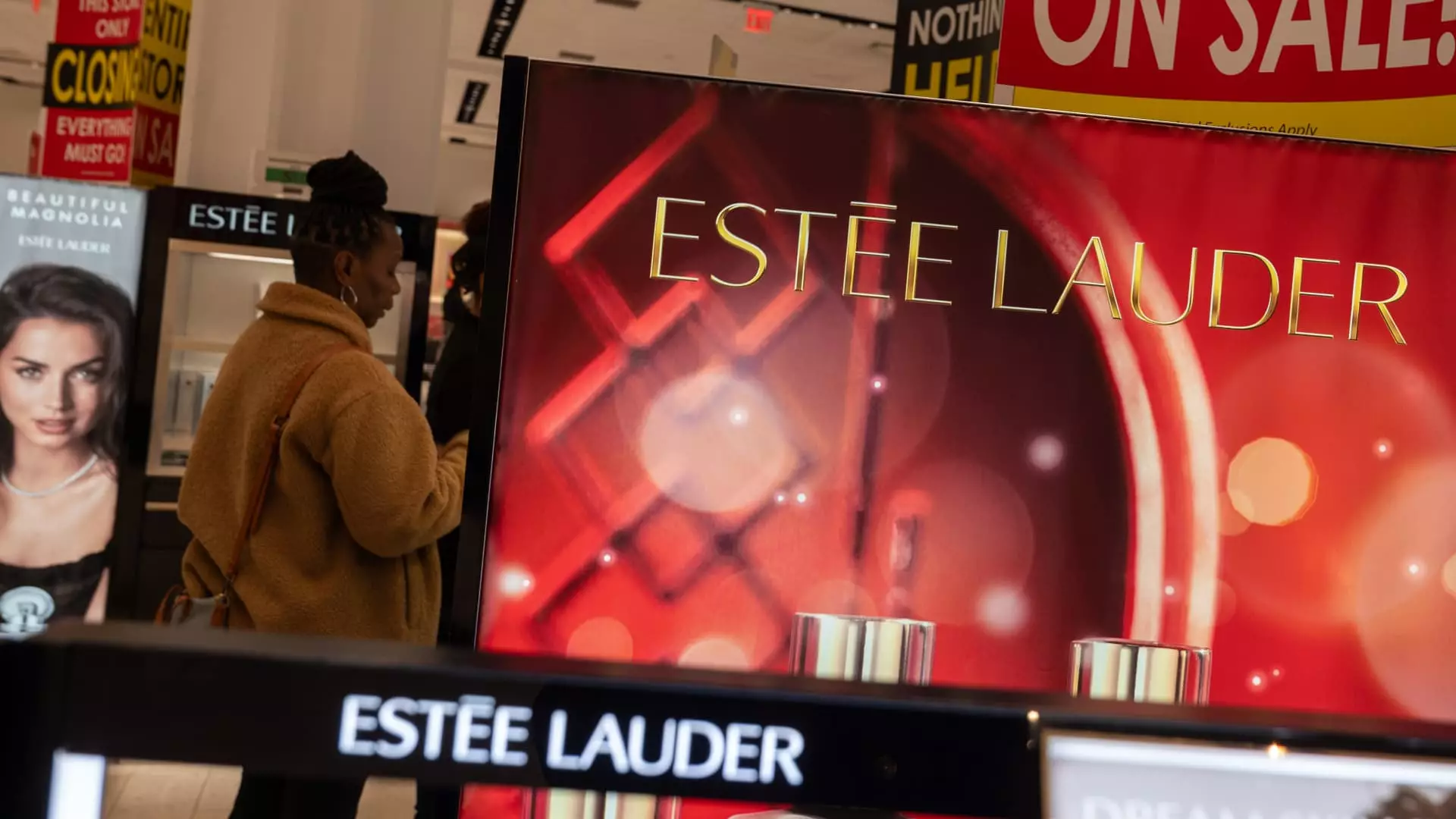Recent developments in the beauty industry have sparked considerable concern as several notable companies, including E.l.f. Beauty and Estee Lauder, reported significant financial setbacks. This series of disappointing earnings announcements has not only led to drastic declines in stock prices but has also raised questions about the broader state of the beauty market. The impact of holiday sales hangovers, fluctuating consumer engagement, and global economic pressures are forcing industry leaders to reevaluate their positions and strategies.
E.l.f. Beauty has been at the forefront of this crisis, witnessing its shares plunge nearly 29% in a single week—the most dramatic drop since August 2018. On the surface, the company managed a revenue beat for its fiscal third quarter, yet its failure to meet adjusted earnings per share expectations led to a painful reduction in full-year guidance. The updated sales forecast, now pegged between $1.3 billion and $1.31 billion, signifies a notable downward adjustment from previous estimations. CEO Tarang Amin’s statements about the cosmetics sector contracting by 5% in January highlight a concerning trend that suggests stagnation amidst intensifying market competition.
Similarly, Estee Lauder has faced its own challenges, with shares plummeting 22%, marking its worst performance since November. Despite achieving positive second-quarter results, the company shocked investors by proposing significant job cuts—between 5,800 and 7,000 positions—by the end of fiscal 2026. This drastic measure is attributed to dwindling demand in travel retail markets across Asia, which has directly impacted anticipated net sales. CEO Stéphane de La Faverie candidly admitted during the earnings call that the company lost its agility, reflecting broader issues of adaptability within the rapidly evolving beauty landscape.
The ripple effect of these developments has also impacted other prominent brands such as Ulta Beauty and Coty. Both companies saw their stocks slip, with Ulta down 9% and Coty nearly 8% for the week. The decline can be linked to E.l.f. Beauty’s admissions of “softness” in sales at Ulta, indicative of the broader troubles within brick-and-mortar beauty retail. The discernible weakness observed at retail points raises concerns about consumer spending habits and preferences in the post-holiday market.
Adding a layer of complexity to these woes is the looming threat of tariffs. The recent announcement from China regarding tariffs on select U.S. imports has intensified worries that profit margins may be further eroded. With approximately 80% of E.l.f.’s products originating from China, the company finds itself teetering on the edge of an economic precipice. Although Amin expressed relief that the imposition of tariffs was limited to 10%, the potential long-term ramifications of trade tensions cannot be overlooked.
As we witness the beauty sector grappling with these significant challenges, it becomes clear that immediate remedial action is required. In a landscape where consumer preferences can shift abruptly, companies must adapt swiftly and strategically to regain their footing. Fostering innovation, restoring consumer engagement, and navigating trade challenges will be critical for these beauty brands striving to climb back from their current predicaments. The road ahead may be precarious, but with thoughtful leadership and strategic pivots, the beauty industry can potentially revitalize its performance and regain investor confidence.

